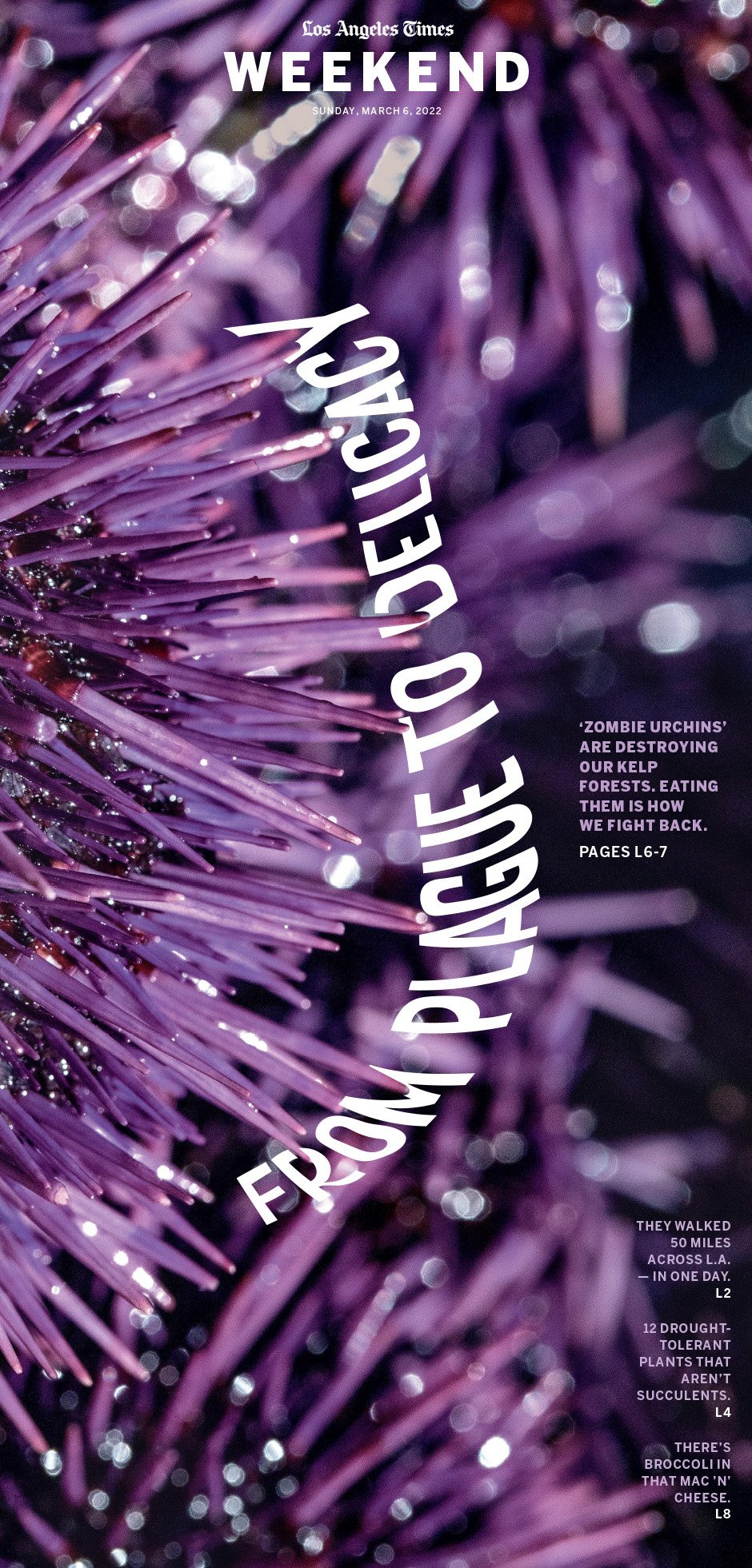Originally published in the Santa Barbara Independent
Shailene Woodley and Doug Bush in ‘Hope in the Water: Changing the Menu’ | Credit: Courtesy
National Attention for Efforts to Improve Nearshore Ecosystems While Creating New Seafood Product
By Matt Kettmann
Rarely is environmental activism so delicious as slurping purple urchin, the voracious shellfish species currently overwhelming nearshore ecosystems across California. Enabled by warming waters and the decline of usual predators, the spiky, globular echinoderms eat so much kelp that only urchin barrens remain, which isn’t great for other species. Meanwhile, the species’ gonads — so prized in their red cousins as the source of uni — aren’t reliably edible in the wild.
But as a team of Santa Barbara urchin divers and abalone farmers discovered, the purples can be fattened on land, and then sold at top dollar to restaurants and uni-craving individuals. Fans find the hotchis — as they’ve become known, derived from the English Romani word for “hedgehog,” though directly translating to “forest urchin” — to be consistently plumper and even richer in flavor than the reds.
I wrote a cover story on this collaboration between divers Harry Liquornik and Stephanie Mutz of Sea Stephanie Fish and Doug Bush of The Cultured Abalone, an aquaculture farm on the Gaviota Coast, back in February 2021. This summer, that news is going national thanks to a PBS series about aquaculture across the United States.
“My favorite part about this project is that it demonstrates that aquaculture and traditional fisheries have more to gain from productive collaboration than they do being at odds with each other,” said Bush when I called recently for an update. “It goes against the presumption that aquaculture and fisheries have a fundamentally adversarial relationship.”
Developing these relationships is just as critical as the work itself. “We need creativity,” said Bush of dealing with ecosystem-wide issues. “We need an approach that’s more than just ‘freak out and close shit down,’ which is the only apparent response that the large regulatory and NGO community tends to contribute.”
To be clear, eating purple urchins alone will not solve the problem. “It just adds a tool to the toolkit,” said Bush. “No one has suggested that we’re going to be able to harvest enough purple urchin to bring the ecosystem into balance within a year or two. The scale of the problem is really not well-appreciated.” Plus, the issue is often mischaracterized. “They are not an invasive species,” he explained. “They’re not mad at anybody. They’re not evil. They’re just out of balance.”
Bush believes focusing on solutions is much more effective than debating the past. “We can burn a lot of energy on how we got here,” he said. “We can talk about El Niño, as if anybody knows what El Niño is. Or warm water blobs, or anthropogenic climate change, or overfishing. But if you say any of those, you’ve alienated half the room. You’ve given them a reason to prejudge your strategy.”
Instead, he’s giving value to something that historically had none. “The demand for uni is enormous,” said Bush, who doesn’t see the purples competing with red urchins, which have been a very well-managed fishery for decades. “We’re enriching the reputation for California and Santa Barbara as a source for very, very high-value uni. We are able to add a new menu item to the classical California seafood card.”
Bush started dabbling in purple urchin’s potential more than 15 years ago, originally thinking they could be fattened for scientific researchers. But the culinary project didn’t really kick off until about five years ago, the result of dockside conversations between him, Liquornik, and Mutz, who’s likely the most famous urchin diver in the world.
The hotchis have been chugging along ever since, with significant progress being made in the last year over certain technical kinks, particularly around shipping. There’s particular potential in a packaging technique called “ensui,” where urchins can stay fresh for five days while soaked in saltwater.
But the whole project is still very tiny. “We can support a handful of restaurants,” said Bush, in addition to the consumers who order from The Cultured Abalone directly, where a dozen cost $140. “We are looking at taking this up a couple levels right now.”
He hopes other companies will jump in. “I have no interest in being a gatekeeper, in being the sole source of purple urchins,” said Bush, who believes similar projects, perhaps with different techniques or by fattening them on another food source, could be developed from Monterey to Bodega Bay. “We’ve been open-source about it. We get people calling us all the time.”
But the state’s historic lack of support for aquaculture did not lay fertile ground for innovation. “Maybe this could be a good catalyst for moving things a little further along that road as well,” said Bush.
Shailene Woodley in ‘Hope in the Water: Changing the Menu’ | Credit: Courtesy
The three-part PBS series, which is called Hope in the Water, begins airing on Wednesday, June 19, at 6 p.m. The purple urchin episode, titled “Changing the Menu,” hits the small screen on July 3 and features actor Shailene Woodley diving for urchins with Stephanie Mutz of Sea Stephanie Fish. Bush provides commentary, as does UCSB marine biology professor Halley Froehlich, and then Chef Rhoda Magbitang from Mattei’s Tavern turns the purples into uni gold. The episode also showcases the work of Fishadelphia, which introduces less-popular Atlantic Ocean seafood species to inner-city high school students, and Iceland’s 100% Fish Project, which is showing how to get the most out of every single cod that’s caught.
“They were such delights to work with,” said Bush of the PBS team, which shot the material about a year ago. “They were efficient. They had a plan.”
Naturally, he’s proud to be getting national attention. “I’ve been a very outspoken advocate for this type of project,” said Bush. “It’s market-based. It’s regional-food-system-based. It engages people with food and the environment. It’s fun. It’s weird. It’s unusual. It’s a really neat project.”












